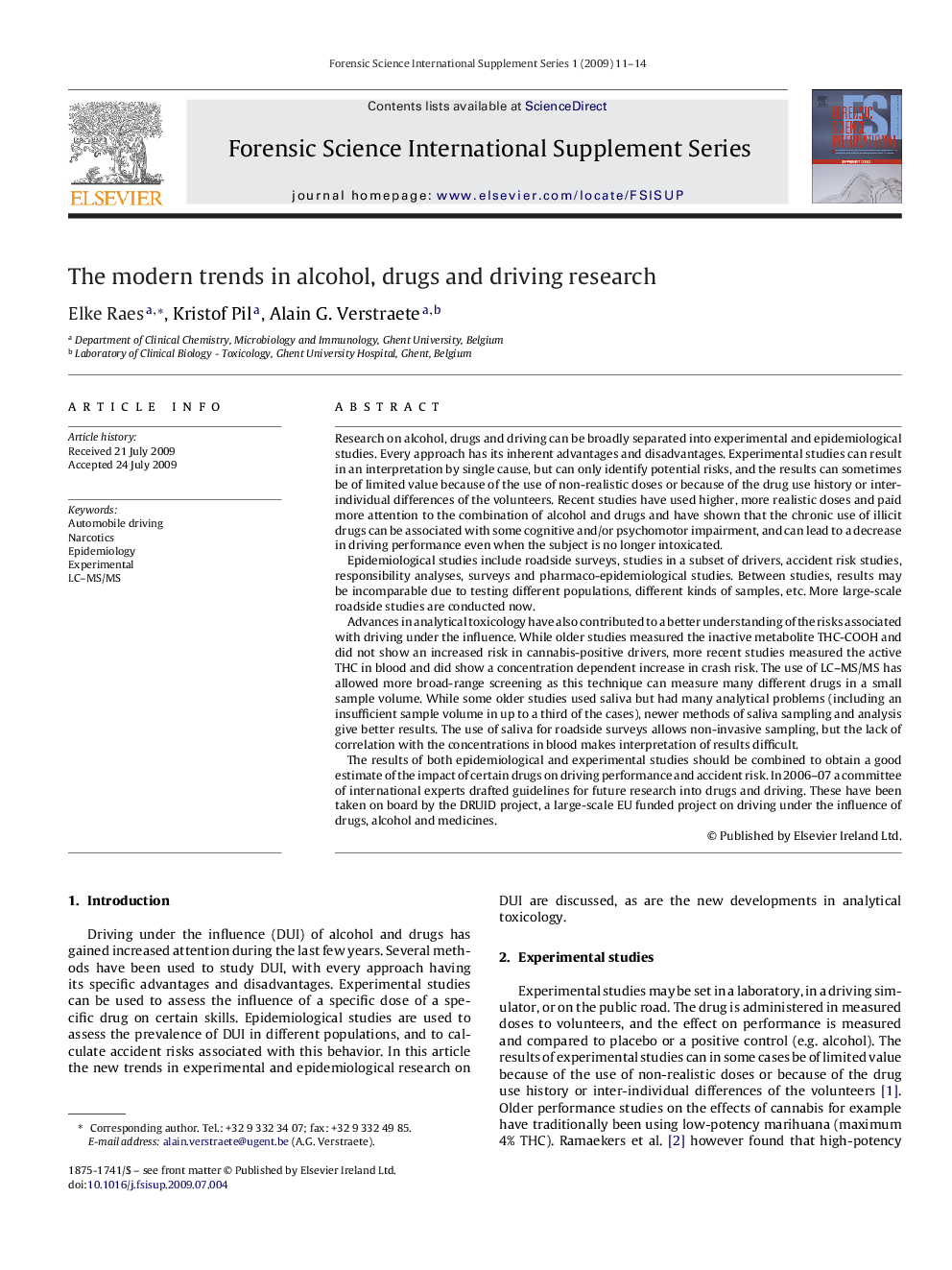| کد مقاله | کد نشریه | سال انتشار | مقاله انگلیسی | نسخه تمام متن |
|---|---|---|---|---|
| 99984 | 160955 | 2009 | 4 صفحه PDF | دانلود رایگان |

Research on alcohol, drugs and driving can be broadly separated into experimental and epidemiological studies. Every approach has its inherent advantages and disadvantages. Experimental studies can result in an interpretation by single cause, but can only identify potential risks, and the results can sometimes be of limited value because of the use of non-realistic doses or because of the drug use history or inter-individual differences of the volunteers. Recent studies have used higher, more realistic doses and paid more attention to the combination of alcohol and drugs and have shown that the chronic use of illicit drugs can be associated with some cognitive and/or psychomotor impairment, and can lead to a decrease in driving performance even when the subject is no longer intoxicated.Epidemiological studies include roadside surveys, studies in a subset of drivers, accident risk studies, responsibility analyses, surveys and pharmaco-epidemiological studies. Between studies, results may be incomparable due to testing different populations, different kinds of samples, etc. More large-scale roadside studies are conducted now.Advances in analytical toxicology have also contributed to a better understanding of the risks associated with driving under the influence. While older studies measured the inactive metabolite THC-COOH and did not show an increased risk in cannabis-positive drivers, more recent studies measured the active THC in blood and did show a concentration dependent increase in crash risk. The use of LC–MS/MS has allowed more broad-range screening as this technique can measure many different drugs in a small sample volume. While some older studies used saliva but had many analytical problems (including an insufficient sample volume in up to a third of the cases), newer methods of saliva sampling and analysis give better results. The use of saliva for roadside surveys allows non-invasive sampling, but the lack of correlation with the concentrations in blood makes interpretation of results difficult.The results of both epidemiological and experimental studies should be combined to obtain a good estimate of the impact of certain drugs on driving performance and accident risk. In 2006–07 a committee of international experts drafted guidelines for future research into drugs and driving. These have been taken on board by the DRUID project, a large-scale EU funded project on driving under the influence of drugs, alcohol and medicines.
Journal: Forensic Science International Supplement Series - Volume 1, Issue 1, December 2009, Pages 11–14